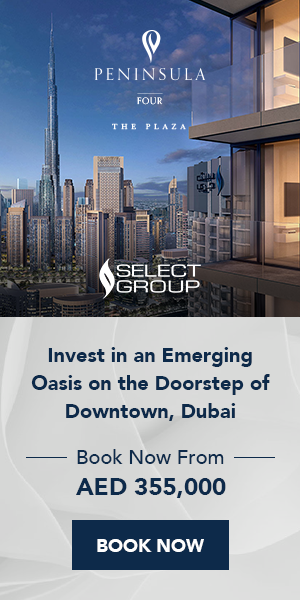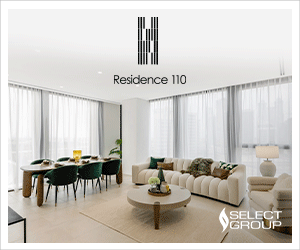With global warming coming more and more into the spotlight, the focus of many has shifted from building concrete marvels to sustainable homes. This much-awaited change is being welcomed by not just the millionaires out there, but by the general population as well. Turning your regular homes into eco-friendly havens is the new thing and it is here to stay. Here are the some of the most most Eco-Friendly Homes in the Word which are paving the way for sustainable living:
1. Hemp Cottage, County Down

You can probably guess that hemp was one amongst the most a part of the development materials of this beautiful eco-home in European country. Hemp lime composite or ‘hempcrete’ to be precise that is eco-friendly. The good news is it’s available for holidays. Architects designed this eco house from innovative locally sourced timber frame and natural insulation materials.
This cottage provides a healthy and relaxing get away from the stress or urban life. The river can be heard from the house and the setting is peaceful. Ample outside furniture to sit and eat on the deck in the garden. Level access to the house and shower is provided so is suitable for wheelchair user. Natural paints and cleaning products have been used and are available.
Two miles from Crossgar village with pubs, cafes and excellent wine shop. 10 minutes from Strangford Loch and not far from Mourne Mountains and beaches. Local golf course 2 miles away.
2. Acqua Liana

Not all millionaire homes are grotesque within the styles of their glorious homes. This property in Sunshine State is one amongst the foremost eco-friendly mansions in the world. Solar panels line the court that generate enough electricity to run the estate. Along with rescued wood, eco-lighting and a water supply system, this is one eco-friendly mansion.
Acqua Liana represents the most magnificent oceanfront estate home created by Frank McKinney during his stellar 25-year career as a real estate “artist.” Acqua vine, the Tahitian and Fijian word for “water flower,” was bestowed with its unique name resulting from the home’s calming and soothing inclusion of many forms of liquid serenity.
From its water floors and water walls, to its water gardens and waterfalls, to its pools, reflecting ponds and fire spa, to the ocean beside and the intra-coastal waterway behind, each is found tangled during a magic and eternal blossom at Acqua vine. The property is additionally protected by a formidable concrete and steel land barrier.
3. Zero Carbon House, Birmingham

This eco-friendly is a sight for sore eyes and a dream for nature lovers. Solar panels adorn the roof, a cistern collects rain water to run the bathrooms and it takes advantage of the maximum amount natural light-weight as doable to scale back electricity consumption. Fair play. This eco-extension has fully remodeled the inner-city home of designer John Christophers.
This house by Christophers proves that “green does not have to be dull”. From the street, the house is unmissable. Rising from a row of traditional two-storey red-brick terraces built in the 1840s, it reaches upwards for maximum solar gain. The roof is pitched at a 30-degree angle and laden with thirty-five sq metres of star panels.
Angular wood-lined dormer window windows jut from the front facade, whereas associate inverted L-shape designed from saved brick frames the sting of the fashionable extension. An airtight membrane is buried within the walls and floor to stay draughts out and heat in.
The mature garden at the rear of the house provides shade within the summer and permits daylight through in winter. The washer and bathrooms use fresh water gathered in a very tank lurking within the cellar, whereas skylights minimise the requirement for electrical lights.
4. Vashon Island Cabin, Washington

This island retreat boasts the most effective uses of natural lightweight eco-friendly options within the most picturesque of locations.
A combination of a hydronic system and solar energy provides the heating and a dynamic window structure permits natural ventilation. All in all a natural experience in the countryside Who doesn’t love a quiet country escape after a long week in the urban mix?
Surrounded naturally and gorgeous views, one lucky family in Washington has found itself with a trendy escape they’ve named the Vashon Island Cabin. An attention-getting, trendy three-bedroom city district retreat, this cabin was carefully designed by Vandeventer + Carlander Architects to include an innovative layout atop a compact 172m2 lot. The new building options intensive windows throughout that not solely leave nice views of the Puget Sounds, however additionally create the foremost of natural lightweight and passive star heating.
The new cabin additionally options exposed concrete floors, with energy-efficient hydronic heating, which serve as a heat sink for passive solar heating. Moreover, sun screens and operable windows providing cross-ventilation provide for natural cooling, in turn alleviating the need for mechanical air-conditioning. The robust box corners and straightforward shapes of the planning are created with a picket box insertion calling it quits the quantity of the most cabin nicely.
The plan well encompasses the master bedroom, bathroom and kitchen, meaning the overall cabin feels anything but small. In addition, the daylit basement includes a family room, two bedrooms, and a new bath with laundry. The cabin was completed in 2009.
5. Arched Eco-house, Kent

Putting the ‘arch’ in ‘architecture’, this contemporary home combines putting style with equally putting eco credentials. The house, that was in-built 2009 at a price of around £800,000, is stuffed with energy-saving variations. For instance, the ground is created of crushed glass bottles to soak up heat, the doors are vacuum-insulated, and also the walls are stuffed with 10 heaps of recycled newspaper for insulation. Richard and Sophie Hawkes appeared on Grand styles throughout 2009 realising their dream, to make their painting eco-house within the Kentish country.
On the show Richard built his highly acclaimed eco-arch passivhaus, proving that clever architecture need not be expensive and has since used his family home to test out the latest eco-technology. Grand styles came back to crossing throughout the summer of 2011, to check however the property had softend into its agricultural setting.
6. Active House, Denmark

Probably the foremost eco-looking building on the list, this Denmark house can catch a lot of energy than it uses through a mass of star panels, along side several different environmentally-friendly features.
The temperature of the within is computer-controlled by a system that is able to mechanically open or shut windows looking on whether or not the house is just too hot or too cold. The Active House label could be a worldwide quality stamp for comfy and property buildings. The Active House label are often issued to buildings that has been evaluated in accordance with the Active House specifications and meet the minimum demands for indoor comfort, energy efficiency and environment. Home always produces a lot of energy than it consumes.
With an energy surplus of nine kWh/m2/year, it takes forty years for the house to come up with a similar quantity of energy that was accustomed turn out its building materials. At that time, the house can have came back a lot of to nature than it consumed. A star setup and seven M2 star collectors generate energy for heating and quandary, whereas fifty M2 star cells generate a lot of electricity than the house consumes.
7. Casa Iseamu, Costa Rica

Situated in associate degree isolated land in southern Central American country, this home manages to be 100% self-sufficing.
The building, which has a massive lined area that’s appropriate for hammocks and barbecues, was made in 2010 and includes 2 electricity turbines that, combined with star panels on the roof, generate its electricity. This attractive trendy building is that the headquarters for the new ISEAMI Institute, that is dedicated to the investigation of property, ecology, and art.
Located on the Osa land, deep within the made and biologically-diverse rain forest of Central American country, Casa Iseami runs wholly off-grid due to associate degree on-site hydropower system and a electrical phenomenon roof. Costa Rica-based Robles Arquitectos styleed the building in keeping with their SDRA design method, that evaluates ten necessary components so as to scale back a project’s negative impact on the atmosphere.
Juan Robles developed a way for design style that explores ten elements: web site, climate, energy, water, materials, atmosphere, atmosphere, cost, innovation, and therefore the use of passive ways and enforced processes.
For more information about interesting place to live in the UAE, visit https://www.zoomproperty.com



 Join Our Newsletter
Join Our Newsletter